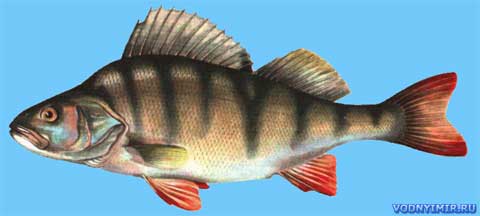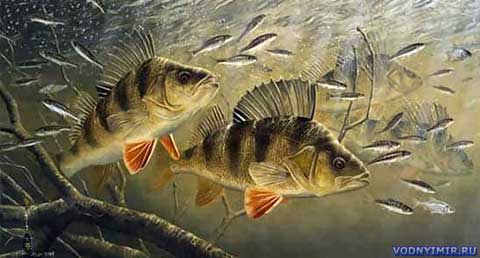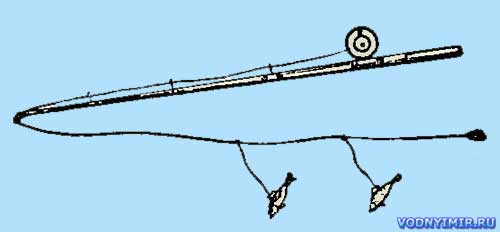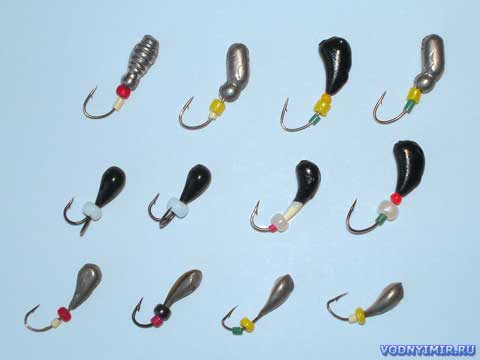Perch fishing in winter and summer: for baubles, jig and fry

Sun and perch
It is known that perch is mainly a daytime fish, and they catch it from morning until dusk. It is also known what kind of tackle it is caught on: in summer, more often on spinning and float fishing rod, in winter — on a jig and a spinner. But where to catch? There are no exact laws on this score, and here the angler has room for personal observations.
It has been noticed that more reliable perch places are the edges of reeds and coastal shrubs, the edges of underwater islets and old riverbeds, although large perch should probably be looked for in strong places — in pits, pools, under cliffs, where it accumulates in small colonies.
Perch is a water tramp, such a feature of behavior is noticed behind him: in the early morning, during feeding, he walks in flocks near the shore to a certain place, and then returns back by the same path. That's where we need to look for him. In winter, anglers find these fish trails easily and line up on them in long rows.
Perch is curious, almost not afraid of noise (in some cases, noise even attracts perches), he is careless, greedy, and therefore more often than other fish becomes a trophy of the angler.
Perch fishing in summer — spinning, on a jig, float fishing rod
In the hot summer months, in July-August, when the perch is predatory in the upper layers of the water, chasing small fish, it is exciting and gambling to hunt it with a spinning rod. This hunt can be prey both from the boat and from the shore, it is only important to notice where the predator is fattening.
Fishing such a site with a small spinning spinner, you can get more than a dozen perches without leaving the place. It is clear that the bait should be shiny, like a small fish, and it should be led almost on top.
Running hunting from a boat in a plumb line to a jig is also interesting. In relatively calm weather, it is necessary to go to the reservoir, fold the oars and let the boat move freely in the wind, while fishing for holes at depth and overgrowth on the shoals. Having found a flock of fish, immediately drop anchor and continue fishing on the spot for a while. Then again the movement, again the search for a new flock.
The wire rod justifies itself on the current. The perch can't stand it, rushes to the movable nozzle. And on lakes, it takes better in windy weather, when the float is swinging on a wave, and the nozzle — a fry, a worm, a moth — repeats its movement.
Steamboats, self-propelled barges, «Meteors» and «Rockets» pass along the riverbed, which catch up with the wave on the shore. Anglers at the same time usually try to choose fishing rods rather and make a mistake! The wave, it turns out, is not a hindrance, but an assistant to the angler.
Running onto the shore, it raises sand and silt, muddies the water. Small fish are trying to move away from the shore. This is just what the perch is waiting for. He has already adapted to the movement of water in the river and tries to graze away from the surf, waiting for prey. The nozzle is a worm and a bloodworm on a shiny jig or on a hook No. 3-4 float fishing rod.
Bass fishing for fry

The autumn perch season has begun, and at this time of year we, old anglers, always begin to catch the voracious red-finned predator for fry.
Taking with me float rods and a baby fish, I drive up to the reeds or algae that have come to the surface of the water. They have now grouped a baby-a fingerling the size of a match and smaller. Here, between thick algae, he has nothing to fear from predatory fish — perch, pike, walleye.
Lowering the baby next to the grass, I throw bread crumbs into the water, and then I lightly slap the grass with an oar. Malek jumps out of it. I quickly lift the baby. I put three or four dozen fry in a bucket of water. Now you can also look for perch. I lower a fry impaled on a hook a meter from the grass. There is nothing. I try on the other side of the grass. Not either... Without collecting other fishing rods, I look in neighboring places. And almost in a row, 7-10 perches of different sizes come across. Most are about 100 g. One fell into the water, ran away and took the flock away. Looking again.
Perch fishing for fry continues until the ice age. There is a simple and convenient way to detect the parking of perches. A short rod with a coil and rings is equipped with a 0.25-0.3 mm fishing line, to the end of which a sinker weighing 40-50 g of a streamlined shape is tied. At 20 cm above the sinker, a 20 cm long leash with a hook No. 7-8 is attached to the fishing line (preferably through a swivel). A fry is put on the hook. Letting the boat slowly float with the current or downwind, the angler adjusts the length of the fishing line with a rod and a reel so that the sinker is dragged along the bottom, and the fry floats over the bottom. More often they are caught on two hooks (see the picture).

Tackle for catching perch on fry.
The second hook on the leash is attached to a fishing line 25-30 cm above the first leash. The bite of a perch in any place of the boat's passage is felt in the form of a sharp push, clearly transmitted to the angler's hand. After biting and taking out the fish, the boat is anchored, and the angler continues fishing with the same tackle. Sharp twitches should not be allowed, smooth ascents and descents are sufficient with the obligatory touch of the bottom with a sinker.
Bass fishing in winter
Fishing is different from day to day. There is such a bite that there is no time to exchange news with a neighbor, smoke. And then fishermen go from hole to hole, endlessly drilling new ones, gather in groups, discuss, wonder why there is not a single bite today.
The season is considered dead until the end of February. But even in these conditions it is possible to catch, if there is the finest tackle. A jig with a millet grain made of heavy metal, a fishing line of 0.08-0.12 mm, a watchdog sensitive, springy. Instead of a whole moth, plant only its head or the larva of a burdock, necessarily covering the sting of the hook with a nozzle. It is best to catch on a bare jig, put a tiny red or white ring of PVC insulation of the radio line on the forearm of the hook. You can add a small bead. Perch does not always take a playing jig. Sometimes you just need to shake it slightly and lift it up.

Perch fishing jig.
The wind swept the ice on the river cleanly. On a March afternoon, the sun penetrates both the ice and the water near the shore to the very bottom. If you lie down at the hole and look into the water, you will even see air bubbles on the hairs of the grass and shells on the bottom under the sunlight. And you will immediately notice bright-colored perches. But they don't fuss anymore, they don't push each other away from the jig. They stand still, barely moving their fins.
Bulging predatory eyes, a dozen perches hang in the water in an exact circle, in the center of which a jig with a moving worm on a hook sparkles. Slowly, slowly, the circle narrows. But it is worth moving the fishing line a little — and the perches also smoothly back away. At the same time, even the slightest movement of the fins is imperceptible. The picture is amazing. You feel like you're watching a science film from the life of pisces...
A large perch passes by. He lingers for a moment — and suddenly rushes inside the circle, unceremoniously pushing aside his small relatives. A fishing rod bounces on the ice. A jerk — and a full-fledged bright fish falls on the ice. The perch dance, which had been scattered, is going to form a circle again. And again, a large striped predator sneaks by the side. Watch your fishing rod, angler!
Share this page in the social. networks or bookmark:
